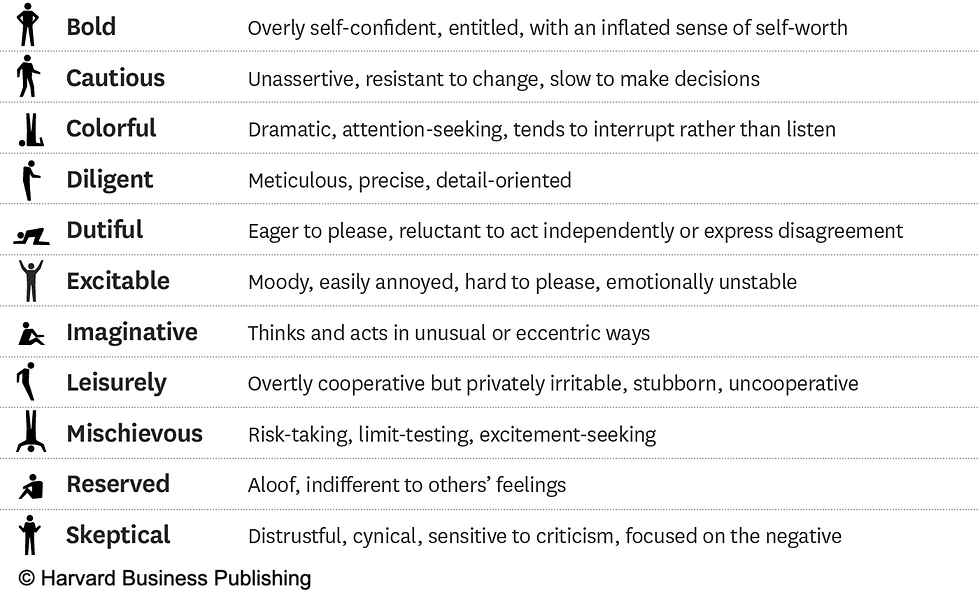How personality traits influence leadership behaviors and performance has always been a hot topic in both corporate and academic worlds. Personality trait models like the Big Five or Hogan Personality Inventory established solid validity in predicting effective leadership behaviors. Based on these models, we work hard on the bright potentials hidden within our personality, figuring a way to unleash our unique way of effectiveness.
Research in the past decade showed us a different view of this relationship. Various researches showed that roughly 50% of managerial relations in the US ended up a failure, whereas such failures are more a result of having destructive personality tendencies rather than a lack of positive personality traits. Apart from studying the bright side of personality, we need to learn more about the dark side of it.
The dark side of personality is part of our normal personality. While there isn't one unanimous definition of what the dark side is, one way of understanding it would be the impression people make when they let down their guard, are less vigilant about how they are being perceived, or when they are under stressful conditions. Although some models see them as distinct traits, mostly dark traits are regarded as extreme versions of positive traits like Big Five, with considerable overlaps between the bright and the dark.
One of the popular models of dark traits would be Hogan's 11-trait model, assessed by the Hogan Development Survey (HDS):

While these traits are framed as "dark" traits, the counter-productive nature of these traits could be concealed by well-developed social skills, making them appear desirable. For example, individuals with high score at Colorful of HDS could be perceived as charismatic. Yet, in the long run, presence of strong, poorly managed dark traits could lead to ineffective behaviors in terms of job performance, organizational citizenship, counterproductive behaviors, poor creativity, or less susceptible to training and behavioral change.
Therefore it is important for us to learn and contain the destructive effects of such traits through changing our behaviors and mindset. The first step to doing so would be to become aware of our own pattern of personality, understanding the unique dynamics of the bright and dark side of our personality.
Reference
Chamorro-Premuzic, T. (2017). Could Your Personality Derail Your Career? Harvard Business Review, 95(5), 138-141.
Hogan, R., & Hogan, J. (2001). Assessing leadership: A view from the dark side. International Journal of Selection and Assessment, 9, 40–51.
Hogan, R. & Kaiser, R. B. (2005). What We Know About Leadership. Review of General Psychology, 9(2), 169-180.
Kaiser, R. B., LeBreton, J. M., & Hogan, J. (2015). The Dark Side of Personality and Extreme Leader Behavior. Applied Psychology, 64(1), 55-92.
Spain, S. M., Harms, P., & LeBreton, J. M. (2014). The dark side of personality at work. Journal of organizational behavior, 35(S1), S41-S60.


ความคิดเห็น